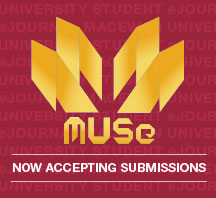Mapping the Police-Media Institutional Relationship
DOI:
https://doi.org/10.31542/muse.v6i1.2260Abstract
The relationship between police and media has been and remains one of the most significant for both institutions. The modern police and modern newspaper developed contemporaneously, each influencing the form, function, and popular appeal of the other. Theories of media and power, however, often address the police as part of larger power structures and ignore the unique police-media institutional relationship.
This research paper establishes essential characteristics of the police-media relationship and identifies frequent sites of interaction between them, with a focus on crime reporting. Media effects, dominant ideology, and institutional approaches are then assessed as interpretive frameworks, concluding that institutional theory provides the strongest theoretical model for analyzing internal and interorganizational behaviours.
The professional norms and practices that compose police and media institutional logics are defined, and their historical origins and evolutions are investigated. These long-established logics continue to direct how police and media construct and respond to crime, and consequently how crime is perceived by the public and treated by legal authorities. Because the habits of crime reporting shape policing practices, altering routine media coverage of crime and police issues may help address systemic problems in policing.
Downloads
Published
Issue
Section
License
Copyright (c) 2022 Brett McKay

This work is licensed under a Creative Commons Attribution-NonCommercial 4.0 International License.
By publishing works in MUSe, authors and creators retain copyright under a Creative Commons Attribution NonCommercial (CC BY-NC) license, which allows others to share these works for non-commercial purposes as long as credit is given. The MUSe Editorial Board reserves the right to make copy-editing changes to works prior to publication to ensure they conform to the publication's style and quality standards. The Editorial Board also reserves the right to archive published submissions in MacEwan University's institutional repository, RO@M.



